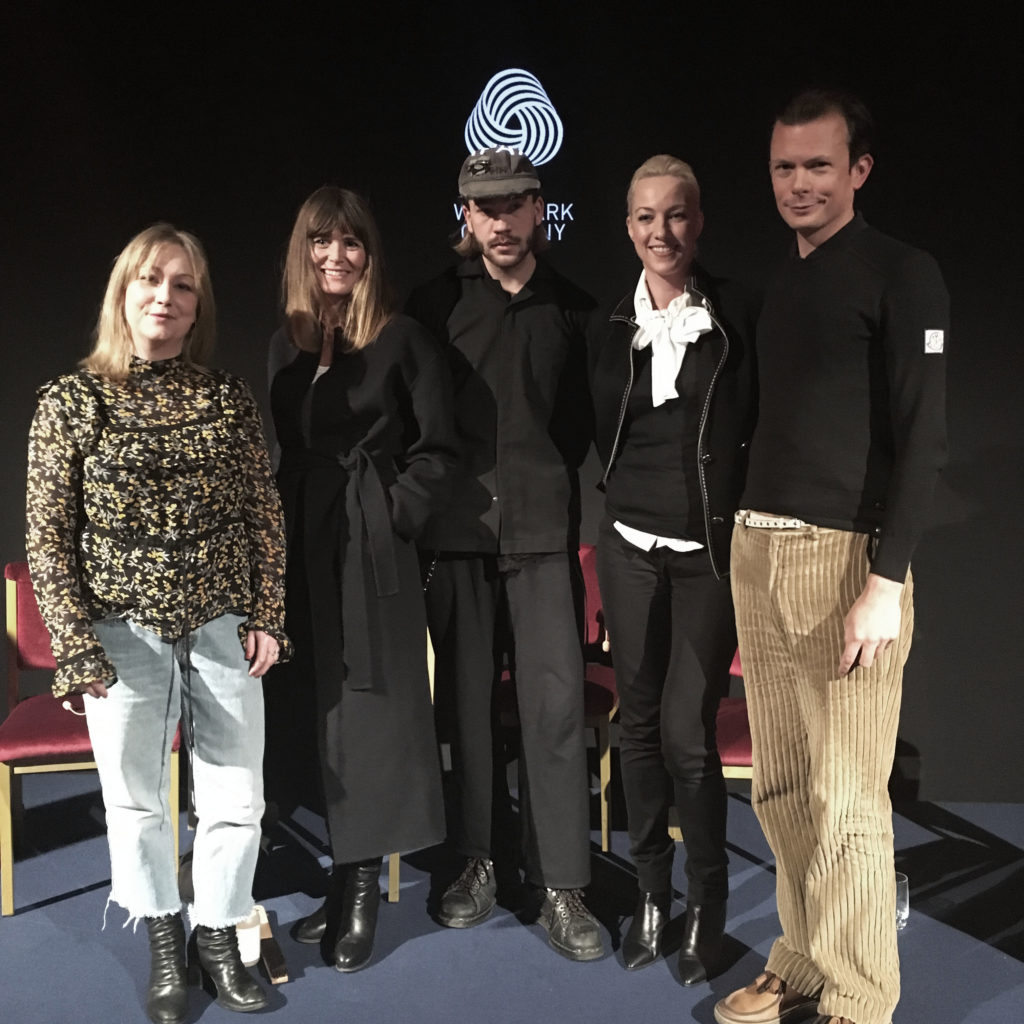Fashion Week season is more than just new clothes. Recently finished Fashion Week Stockholm incorporated a panel debate titled Sustainable Fibers and Business Models. The panelists addressed questions such as how to survive as a retailer, what responsibility a modern fashion brand has when it comes to educating consumers and what data is needed to enable a change.

Helene Forsberg, Elin Larsson, Jonatan Härngren, Sigrid Barnekow, Philip Warkander
On Tuesday morning January 22nd the Swedish Fashion industry was gathered at Grand Hotel to listen to representatives from Filippa K, Grandpa, L’homme rouge and Mistra Future Fashion in a discussion about sustainability and fashion. The panel was moderated by Dr Philip Warkander and presented by The Woolmark Company. Philip opened up the discussion by addressing the growing geographical distances between fashion consumers and garment workers pinpointing it as a reason for the even larger psychological distance. How do we make consumer care when knowledge about material and constructing is no longer a part of everyday life? And what answers do we need to make a bigger change?
Changes backed by data
Sigrid Barnekow, program director at Mistra Future Fashion, began by approaching the question from a helicopter perspective. Sigrid points to the fact that right now we are working within a wrongly designed linier system. To enable change we need to re-design the entire system in order to generate resource efficient and closed loops. From design to supply chain, users and recycling; we need to shed light on current problematic methods and reconsider every step along the line. Sigrid stresses the fact that any proposed change needs to be backed by data. By considering the entire lifetime of a garment using Life Cycle Assessment (LCA) tools it becomes evident what issues are most pressing. Intervening in one phase of the life cycle needs to makes sense across the whole life cycle; this to secure that it does not generate increased issues somewhere else in the value chain. It is not enough just to look at the fiber or materials to claim sustainable choice since 70% of a garments footprint can be traced to the production phase. This means that independent of fiber choice there are still additional pros and cons.
A new retail landscape
Jonatan Härngren, Creative Director at L’homme rouge, says that it is really tough to be a fashion brand right now. Jonatan, who approaches the questions from a creative perspective, stresses the importance of educating the consumer. Today’s consumers compare different garments by looking at the price tag, not the quality of the garment. “This needs to change. We, as brands, have a responsibility to educate customers” says Jonatan. Elin Larsson, Sustainability Director at Filippa K, agrees with Jonatan. In many ways, the imagined value of a garment today has nothing to do with its actual material and this is an important issue to highlight. Elin continues the argument with a rhetoric question, “You have a garment in store for three months and then all of a sudden there’s a sale and the garment isn’t worth the same amount of money anymore?” Furthermore Elin addresses the issue of discarded clothes. Since trends seem to change faster and faster consumers tend to throw away perfectly good garments. However, recycling should only be an option for worn out clothes. Drawing on LCA results producing new garments is the most environmental harmful step in the process and therefore we need different ways of updating our closet. For example, in addition to traditional retail stores Filippa K also provides a leasing concept. Elin says that the progress is somewhat slow but they have actually seen an increase in activity of 153% last year.
Helene Forsberg, CEO at Grandpa Stores, says that the retail industry has changed a lot during the last five years. In her experience customers are starting to ask more questions about production methods and material. This means that retailers need to meet the demand by further educating their staff. However, the competition from e-commerce is really tough. Helene points out that it is difficult to meet the prices offered online and that present retail climate is in need of a big change. She further acknowledges that no one is going to do it alone. Helene says, “Don’t be afraid to discuss the elephant in the room”.
Conclusion
To summarize, the panelist agreed that we are standing on the verge of a big systemic change. The fashion industry is mobilizing but there are still questions left to be answered. By using LCA data as guidelines it becomes evident where we should start. The debate was a reminder to take a step back from the runway shows and consider the entire fashion system.



